Case Profile- Tool Mark id.
I know my site is all about Firearms Identification but did
you know that Firearms Identification is actually a form of Tool Mark Identification? The barrel of a firearm is a tool that
leaves a tool mark on bullets.
Anytime two objects come together there is the potential for the softer of the two items to be
marked in some way. Tool marks are very common in any crime where forced entry is involved. Tools commonly used are
screwdrivers, pry bars, hammers, and bolt cutters. All have the potential to leave a unique "tool mark" in much the
same way a firearm leaves its mark on ammunition components.
The steering column (Figure 1.) of a stolen vehicle had been broken open with some type of
tool. This was done to reach the ignition and to disable the steering wheel lock.
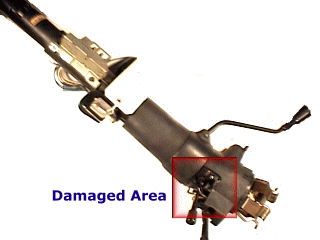
Figure 1. Steering Column.
A suspect located near the vehicle was found to have a screwdriver (Figure 2.) in his backpack.

Figure 2. Screwdriver.
The investigating officer submitted the steering column along with the screwdriver to see if the
screwdriver might have been used to pry open the steering column.
The steering column was examined and an area of striated tool marks was found on a small internal
part (Figure 3.).
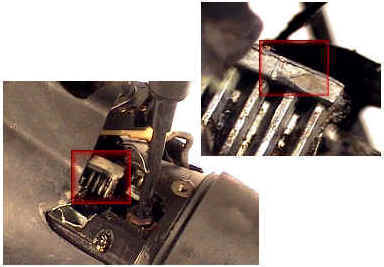
Figure 3. Close-up of tool mark (upper right box).
The questioned tool mark was cast using a dental rubber casting medium (Figure 4.). This
was done so the tool mark could be examined microscopically (It's tough to get a steering column under the microscope!).
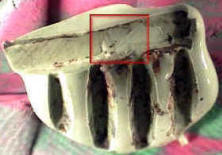
Figure 4. Cast tool mark.
Standards were then made with the questioned screwdriver. The tip of the screwdriver was
pulled across soft sheet lead at various angles and in different directions. The "test" tool marks were cast in the
same method used to cast the questioned tool mark on the steering column (Figure 5.).
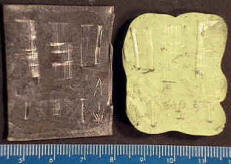
Figure 5. Tool mark standard and cast.
The cast of the tool mark standard was compared to the cast of the tool mark from the steering
column using a comparison microscope. The result of which is seen in Figures 6 and 7.
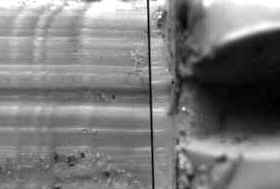
Figure 6. 20X comparison of tool mark standard (left) and questioned tool mark (right).
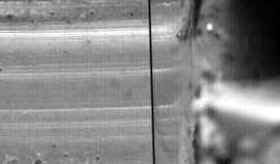
Figure 7. 40X comparison of tool mark standard (left) and questioned mark (right).
|